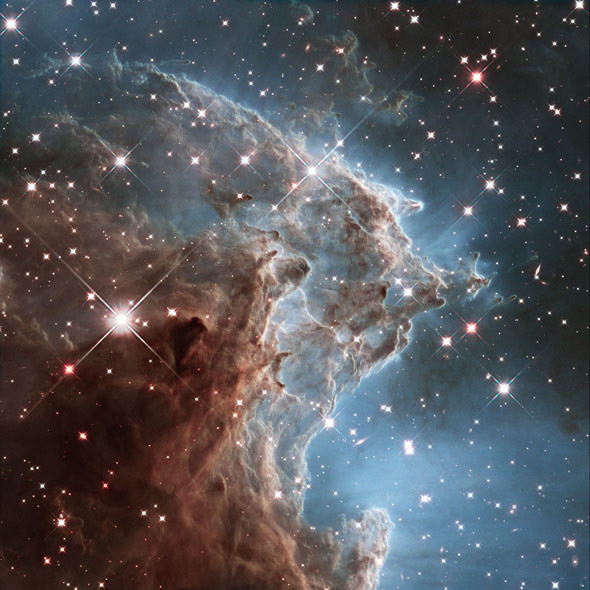Happy Birthday Hubble: How Baby Planets Form from Gas Discs

Astronomers have applied a new image processing technique to capture near-infrared scattered light photographs of discs that are believed to be evidence of newly formed planets.
The images have been released to coincide with the 24th anniversary of the Hubble Space Telescope, which was launched by the Space Shuttle Discovery on 24 April, 1990.
Hubble images held in the Mikulski Archive were reprocessed by the new Nasa technique and revealed five discs that had not been noticed previously. The imaging team with the Space Telescope Institute in the US (STScI) discovered the hidden Hubble treasure by revisiting data retrieved in the early 2000s.
According to the team, the images show a series of planetary systems, similar to our own, forming from discs made of clouds of gas. The stars in question were inititally targeted with Hubble's Near Infrared Camera and Multi-Object Spectrometer (NICMOS).
"Now, with such new technologies in image processing, we can go back to the archive and conduct research more precisely than previously possible with NICMOS data," said Dean Hines of STScI.

Earlier data had provided clues that dusty discs could exist around these stars. Small dust particles in the discs could scatter light and make the discs visible.
Yet when Hubble first viewed the stars between 1999 and 2006, no discs were detected.
But using algorithms normally applied for face-recognition software, the researchers discovered the debris discs.
The NICMOS instrument began collecting data in 1997 and is paving the way for ground-based technologies.
Remi Soummer, who led the team at STScI, told Thespacereporter.com: "These findings increase the number of debris discs seen in scattered light from 18 to 23. By significantly adding to the known population and by showing the variety of shapes in these new discs, Hubble can help astronomers learn more about how planetary systems form and evolve."
The dust is thought to have been created by collisions between small planetary bodies including asteroids.
"One star that is particularly interesting is HD 141943," said Christine Chen, debris disc expert and team member, as reported in Space World Report. "It is an exact twin of our sun during the epoch of terrestrial planet formation in our own solar system."
Hubble found the star exhibits an asymmetrical, edge-on disc. This asymmetry could be evidence the disc is being gravitationally sculpted by the tug of one or more unseen planets.
"Being able to see these discs now also has let us plan further observations to study them in even more detail using other Hubble instruments and large telescopes on the ground," added Marshall Perrin of STScI.
According to Laurent Pueyo, another team member, STScI was working to use the same image processing method for Nasa's upcoming James Webb Space Telescope, formerly known as the Next Generation Space Telescope.
© Copyright IBTimes 2025. All rights reserved.






















